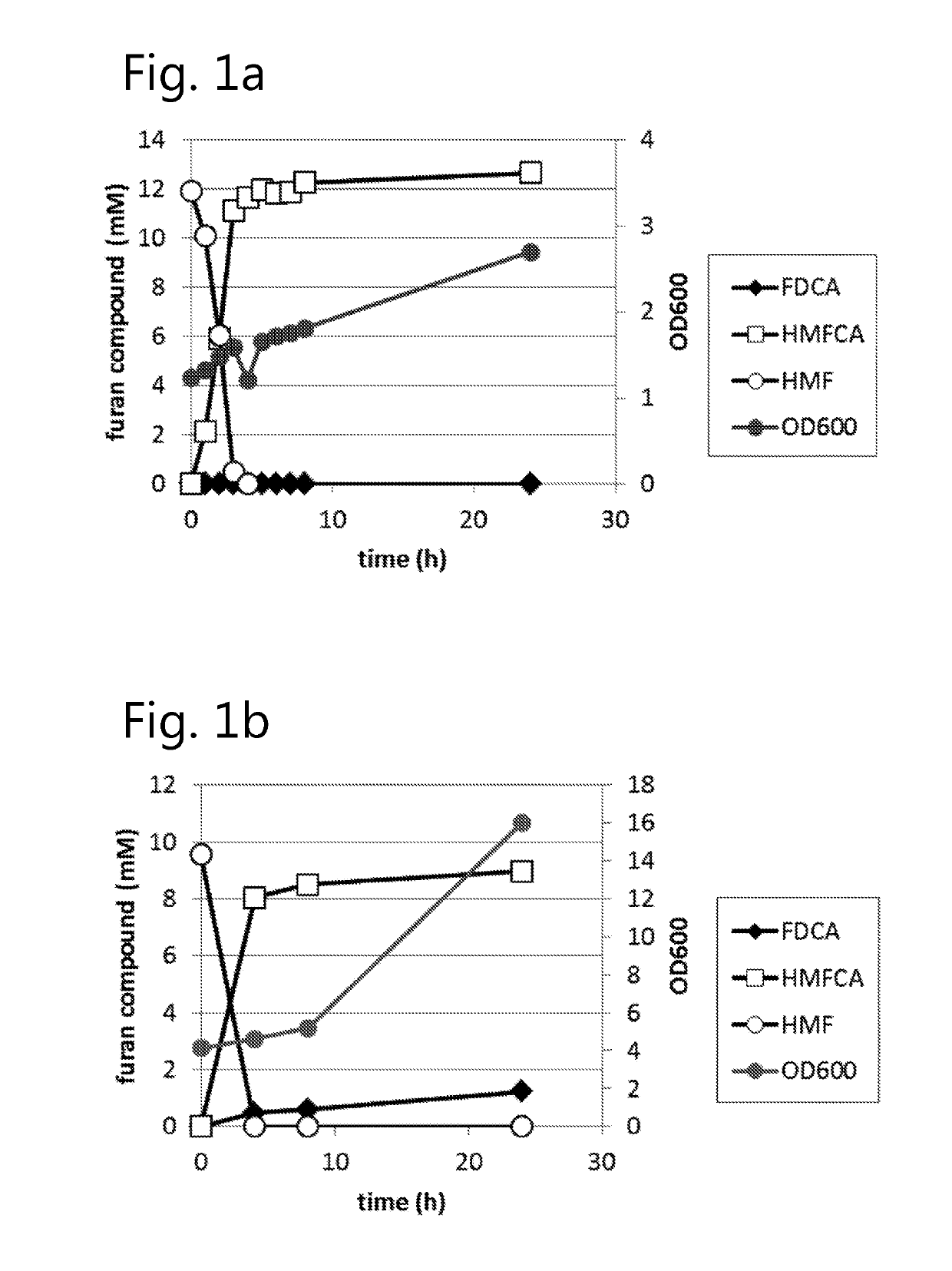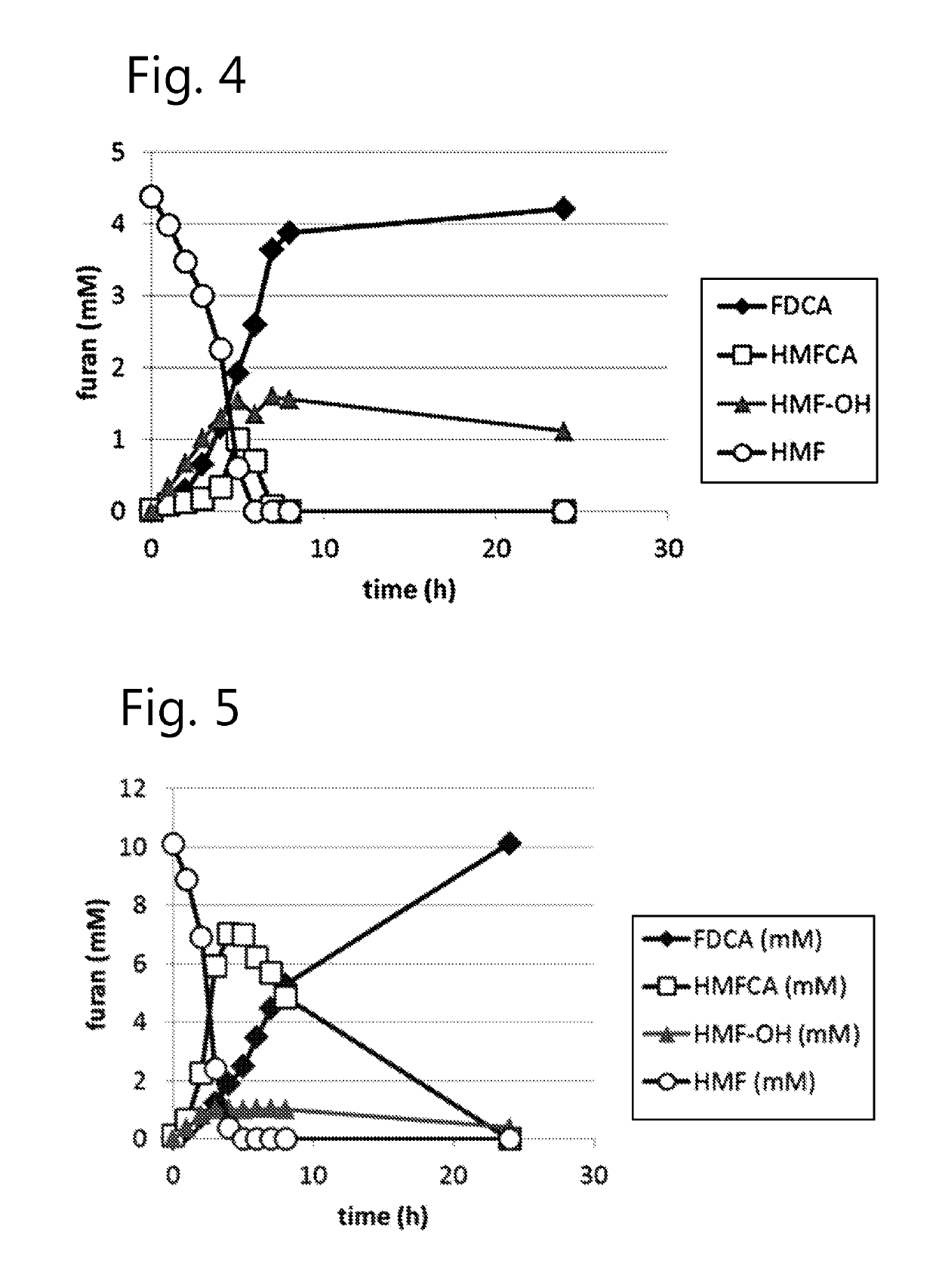Dehydrogenase-catalysed production of FDCA
a technology of dehydrogenase and catalysis, which is applied in the field of dehydrogenase-catalysed production of fdca, can solve the problems of high oxygen demand of the system, lack of energy gain from the oxidative step, and poor affinity for osub>2 /sub>
- Summary
- Abstract
- Description
- Claims
- Application Information
AI Technical Summary
Benefits of technology
Problems solved by technology
Method used
Image
Examples
examples
General Methodology
Strains and Plasmids
[0144]Pseudomonas putida S12Δgcd or P. putida KT2440Δgcd (glucose-dehydrogenase deficient mutants of P. putida S12 (ATCC 700801), resp., P. putida KT2440 (DSM6125)), or wild type P. putida S12, were used as the host for expression of the yiaY gene from Aeribacillus pallidus strain CA1828 (see below). Escherichia coli strain TG90 was used for general cloning purposes.
[0145]For episomal expression of the A. pallidus gene the pBBR1MCS-derived pBT′mcs (Koopman et al., 2010a, Biores Technol 101: 6291-6196) was used. In pBT′mcs the expression of the target gene is driven from the constitutive tac promoter.
Media & Culture Conditions
[0146]Mesophile mineral salts medium (MMM) contained the following (per liter of demineralized water): 15.52 g of K2HPO4, 6.52 g of NaH2PO4, 2.0 g of (NH4)2SO4, 0.1 g of MgCl2.6H2O, 10 mg of EDTA, 2 mg of ZnSO4.7H2O, 1 mg of CaCl2.2H2O, 5 mg of FeSO4.7H2O, 0.2 mg of Na2MoO4.2H2O, 0.2 mg of CuSO4.5H2O, 0.4 mg of CoCl2.6H2O, ...
PUM
| Property | Measurement | Unit |
|---|---|---|
| temperature | aaaaa | aaaaa |
| temperature | aaaaa | aaaaa |
| temperatures | aaaaa | aaaaa |
Abstract
Description
Claims
Application Information
 Login to View More
Login to View More - R&D
- Intellectual Property
- Life Sciences
- Materials
- Tech Scout
- Unparalleled Data Quality
- Higher Quality Content
- 60% Fewer Hallucinations
Browse by: Latest US Patents, China's latest patents, Technical Efficacy Thesaurus, Application Domain, Technology Topic, Popular Technical Reports.
© 2025 PatSnap. All rights reserved.Legal|Privacy policy|Modern Slavery Act Transparency Statement|Sitemap|About US| Contact US: help@patsnap.com



